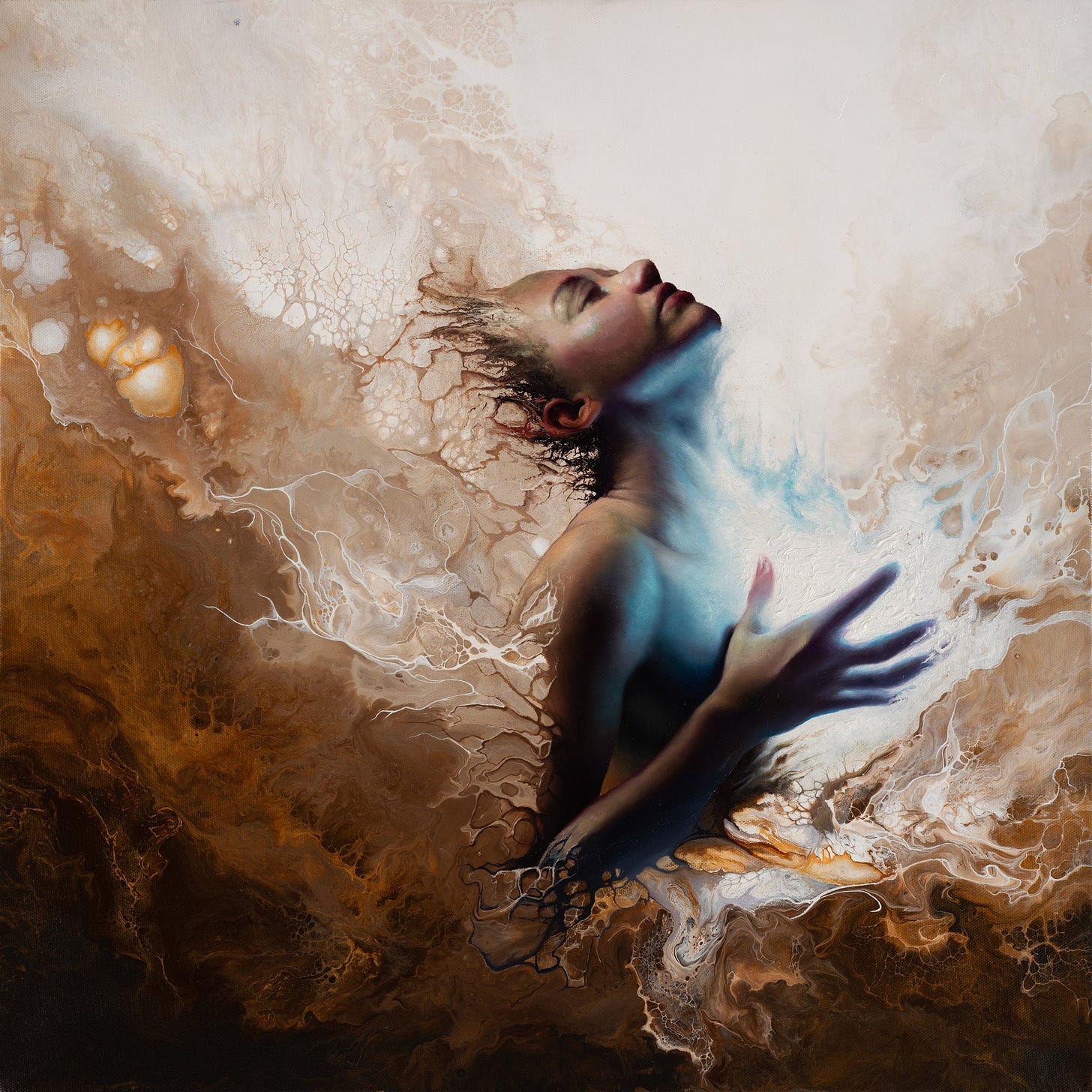Seeking The Face: From Mirror to Mystery
“For now we see in a mirror dimly, but then face to face…”
We have another post today by Eugene Terekhin, the man and the mind behind the publication Philosophy of Language.
We’re pleased to announce that Eugene is now a regular contributing writer to The BoldBrush Letter.
Seeking The Face: From Mirror to Mystery
I have always found it intriguing that Moses was not allowed to see God face to face but only from behind. It seems strange, considering that the call to “seek the face of the Lord” is repeated again and again throughout the Bible.
“You have said, ‘Seek my face.’ My heart says to you, ‘Your face, Lord, do I seek.’” — Psalm 27:8
How come we are called to seek the face of God when even Moses was not permitted to see it?
According to the Church Fathers, God’s face is a profound mystery. When formulating the doctrine of Trinity, they wrestled with which term to use for the Three Divine Persons. The Greek word for person, prosopon, originally referred to a mask worn by actors in ancient Greek theater – hence “face,” “mask,” or “persona.”
The Church Fathers hesitated to use prosopon because it could suggest that God was wearing a mask. So, they found another word – hypostasis – which literally means “that which stands under.” The idea is that Divine essence always “stands under” and must be recognized.
Each hypostasis – each Divine person – reveals Divine essence to those who would “look under.” In other words, the call to seek the face of the Lord is the call to “look under.” God’s true face is not found on the surface of things. All visible manifestations of God hide and reveal Him at the same time.
The phenomena of the world are mirrors of God – when we look through them, not merely at them. We look under, seek under, stand under. God’s true face is hypostasis. We only truly see His face in this world of shadows when our gaze penetrates the shadows and communes with “the beyond.” The mystery of the visible is that it reveals the invisible essence of God.
Curiously, human faces are no different. We never see a human face with our physical eyes. A person’s true face is always behind their physical face (persona). We divine the true face of each other only by looking through the visible face. I first noticed it long ago when I was learning to draw faces. The true face can only be recognized, not replicated.
I discovered that I could copy a person’s facial features with technical precision and still fail to capture their real face – their essence. There was always something deeper I had to see – something I had to recognize behind the mask, usually through the eyes.
I could only draw a physical face, if I caught the person’s inner, underlying “face” – who they were in their essence.
True art is recognition, not copying. That’s why AI is incapable of real art – it can’t recognize the Spirit behind phenomena. Most AI-generated images are lifeless – unless they have been touched by the hand of a human artist. True art springs from within us the moment we penetrate appearances. We only understand when we “stand under.”
When an image is not penetrated, it becomes an idol. If we don’t see beyond it, it ties our gaze to itself, blocking our spiritual sight. Idolatry is the opposite of art. Art sees through the surface to what is real. Art “stands under” – and in doing so, glimpses the Face of God.

Subscribe to Philosophy of Language
By Eugene Terekhin
Philologist, philosopher, translator, and author Eugene Terekhin explores in Philosophy of Language the secret literary theory behind the fantasy worlds of J.R.R. Tolkien, C.S. Lewis, and Owen Barfield who believed that when words are spoken aright, they invoke the invisible reality from behind the veil of the world. He is a voice of much needed wisdom in our day and age, when so much of true art is being eviscerated and trivialized.
Eugene is the author of the following books and I have read three of his books and highly recommend them:
and The New Exodus: Escaping One Man’s War
We urge you to subscribe to Eugene’s insight-packed newsletter filled with the wisdom of the inklings, poets, philosophers, writers and great thinkers by clicking the button below:
Save Money on a Squarespace Site for your Art
ARTFUL SQUARESPACE by FASO Loves Christopher Remmer’s paintings!
See More of Christopher Remmer’s art by clicking here.
Wouldn’t You Love to work with a Squarespace website hosting company that actually promotes their artists?
As you can see, at Artful Squarespace (by FASO), we actually do, and,
we are the only website host we know of that does.
Click the button below to start working
with a Squarespace art website host that actually cares about art.
If you already have a Squarespace site, you can move it to Artful Squarespace with no changes, you’ll likely save money and you can see your art promoted in our newsletters just like Christopher Remmers. If you want a new Squarespace site optimized for art, we can help you with that too!



Thank you! I love this, very well written... and just what I needed to hear/read at this time.
I always wondered about Gods face and didn’t realize Moses only saw God from the back. But did know no one has ever seen Gods face. We’re supposed to go deeper. However, with your insight I discovered so much more and feel I’m finally beginning to understand.
I totally agree the feelings are missing in all of AI. When I write something and then have AI redo my words, the emotions just don’t come through.
Thanks so much. Your gift of insight is a gift to me. God sent.